Warnings:
This antenna is NOT UL or CSA approved: build & use at your own risk. If you have kids in your home, use 3-prong plugs and connect elements to the ground and neutral screws so they can not become energized if plugged into a wall outlet. Be careful how & where you store this antenna so it can't be plugged in by anyone else. Treat it like a firearm. Nuff said.
Theory:
This antenna is a simple half-wave dipole with a fan dipole option (covered below). What makes it unique is the use of recycled components. The elements are made from power cords of discarded vacuum cleaners found by the wayside on trash night. The feedpoint is a standard duplex outlet. The elements literally plug in.
Tie a throw line to the top ear of the outlet for hoisting. Coax attaches to the bottom of the feedpoint section.
If you plug in two antennas at the same time, you will enjoy automatic band switching though tuning might be affected as the elements interact slightly. Simply adjust element lengths as required if you set up with both antennas plugged in.
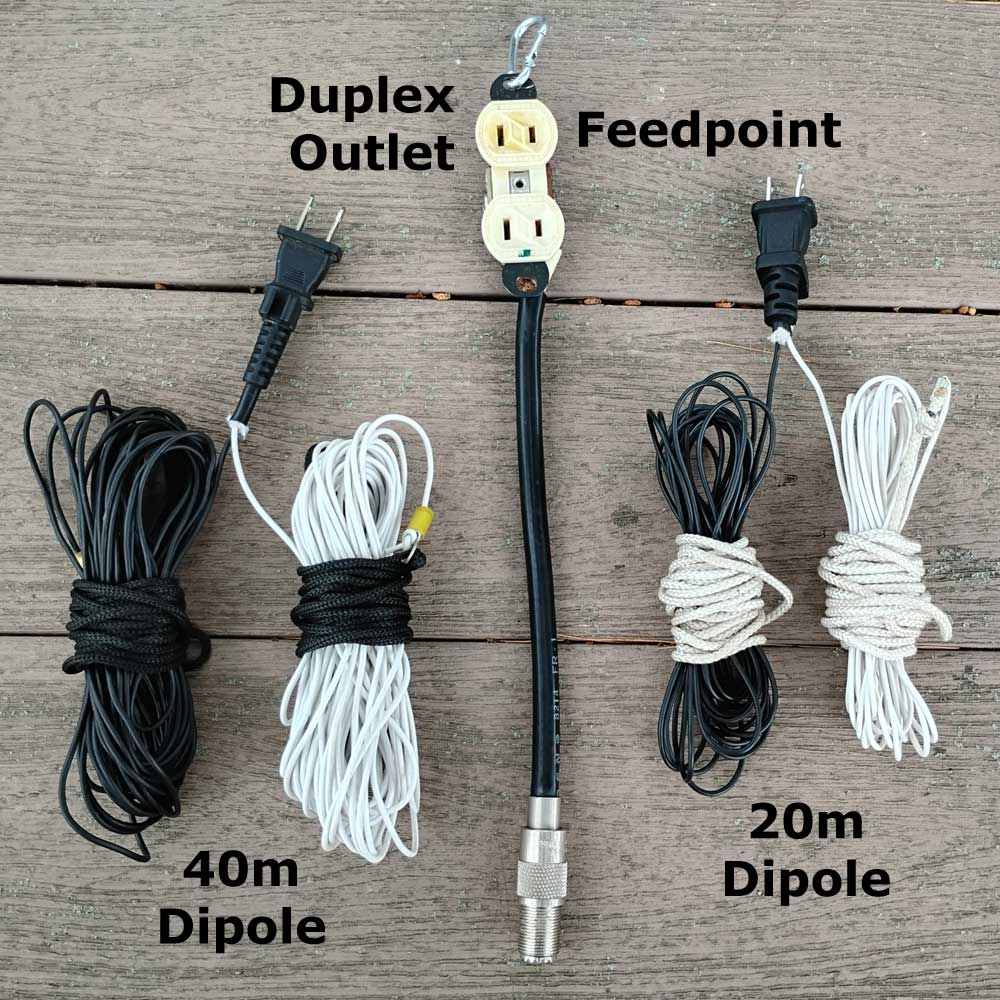
click image to enlarge
Advantages:
• excellent on-air performance
• omnidirectional as inverted-V
• no lossy transformer required = efficient
• no radials = ground-independant
• RF energy well out-of-reach
• easy to build with commonly available materials
• easy to change bands
One disadvantage is the requirement for a support. While a suitable tree limb could easily work in many parks, some operators will need a mast to deploy this antenna.
Feedpoint:
The feedpoint is a standard duplex outlet. I used a short RG-8 pigtail for a durable connection via ring terminals to the outlet. A double-female barrel connector is used to join coax to the feedpoint.
|
|
Coax Prepared |
Coax Connected |
Construction:
Prepare the cord by stripping off the outer plastic and cotton wrap.
All antenna elements should be approximately a quarter wavelength (¼λ) long. Use a Dipole Antenna Calculator (or 234/MHz = length in feet) on the bands you are designing for. Example: 234 / 7 = 33 feet for the bottom of the 40m band. Your actual tuned length may vary from this calculation. As inverted-V it will be approx 5% shorter than flat-top dipole.
Of course, an analyzer will make tuning easy and precise, but you can use the SWR meter in your rig if you don’t have one.
After tuning, for safety, insulate the ends of the elements (on top of the wire's own insulation) with extra layers of shrink-wrap or electrical tape and crimp on ring terminals just large enough for paracord to pass through. In other words, the ring terminals are only mechanically and NOT electrically connected to the elements.
|
|
Example 40m SWR |
Example 20m SWR |
Deployment:
• Toss your throw line over a high tree branch.
• Attach throw line to outlet's upper ear.
• Attach coax to feedpoint.
• Plug in element(s) you wish to use.
• Secure plugs to outlet with nylon zip ties so they won't pull out.
• Stretch elements with tie-off lines out on ground (prevents twisting).
• Hoist the antenna up and tie off the throw line.
• Stretch out elements again forming 90-degree angle at apex.
• Secure tie-off ends to tent stakes.
• Attach coax to your analyzer or radio.
• Check SWR and retune if necessary.
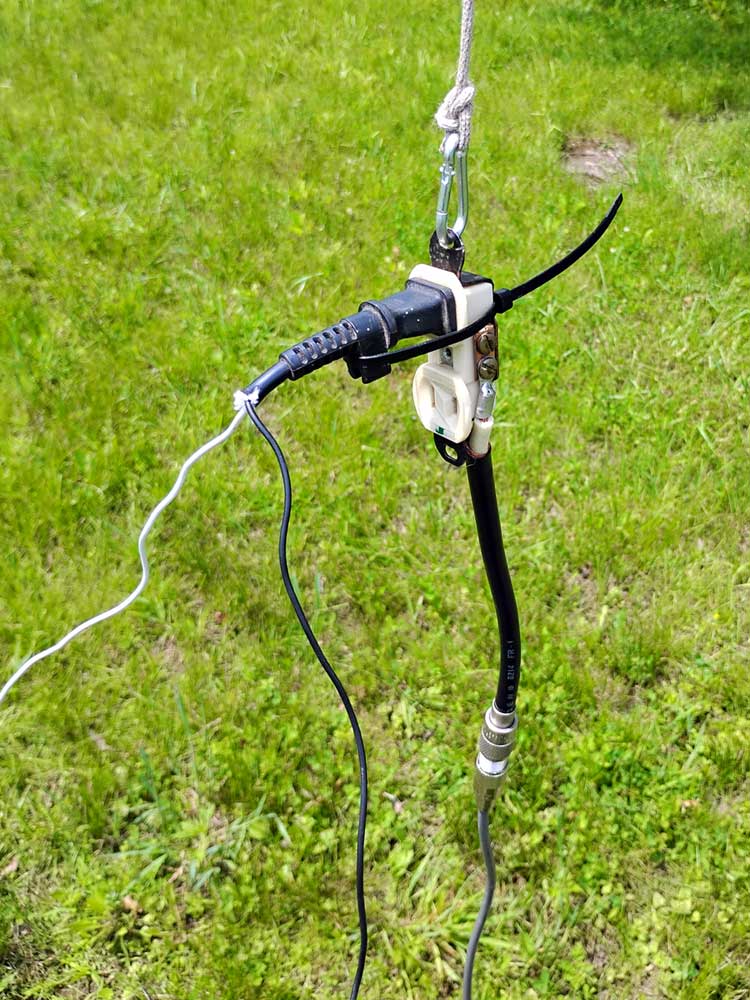
ready to hoist
TIP: You can tweak SWR by changing the inverted-V apex angle. Flatten to lower resonant frequency OR raise antenna feedpoint (smaller angle) to increase the resonant frequency.
TIP: 15m is a harmonic of 40m and this antenna might be used on 15m with rigs that have an internal tuner.
TIP: The higher you install it the better, and it helps if the ends are well off the ground. Add 10-20 feet of paracord or nylon line between the element ends and a tent stake. Use gallon jugs full of water or sand on surfaces where stakes don't work (like a parking lot).
TIP: A fan dipole can be created 2 ways: using separate ropes and ground stakes OR using common ropes and ground stakes with spreaders between band elements. Band switching is completely automatic, and with 40m/20m elements you will also get 15m for free via harmonics. You may need to retune elements if used in a fan configuration due to interactions between bands.

Fan Dipole with Separate Lines
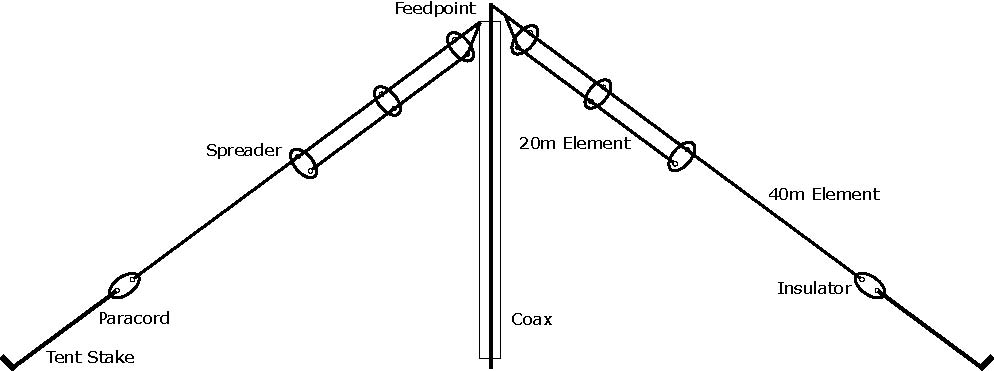
Fan Dipole with Spreaders
It's not just for vacuum cleaner cords anymore!
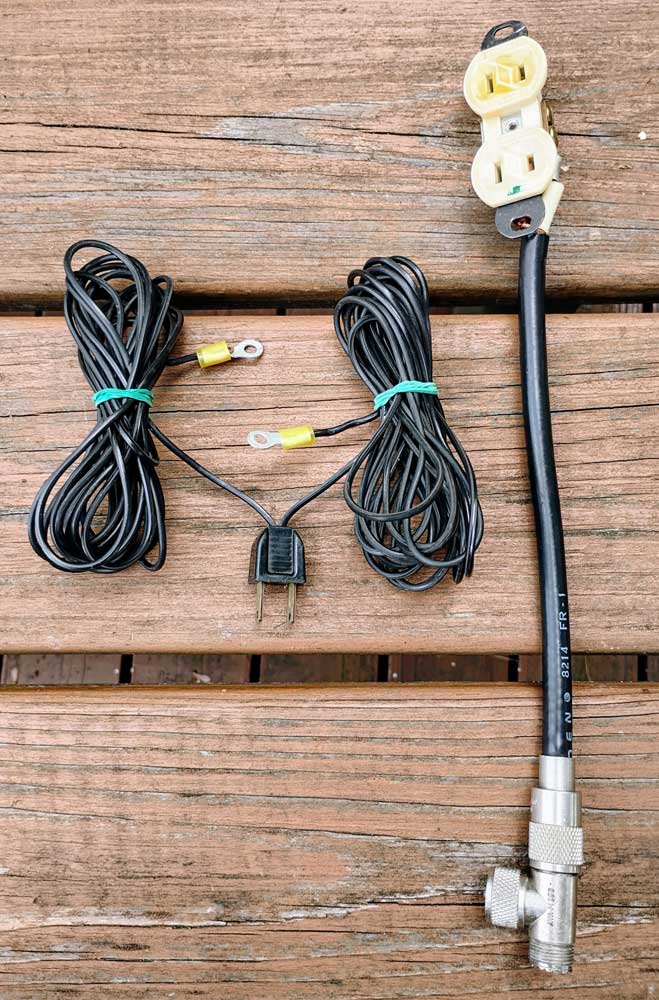
This 17m dipole (inverted-V) was the cord from a floor lamp.
How well does it work? Judge for yourself.
The first 47 minutes on the air yielded 15 QSOs, mostly DX, in chronological order:
QATAR
NETHERLANDS
NORWAY
SPAIN
COLUMBIA
BRAZIL
NV_US
SPAIN
JAPAN
BRAZIL
KUWAIT
LA_US
MALTA
AZ_US
PORTUGAL
How about thin? My 30m plug-in inverted-V is made from 24 gauge wire scavenged from old christmas lights. The complete setup with plug and 10-foot tie lines weighs 4.4 oz of which only 2.4 oz is the actual antenna wire.
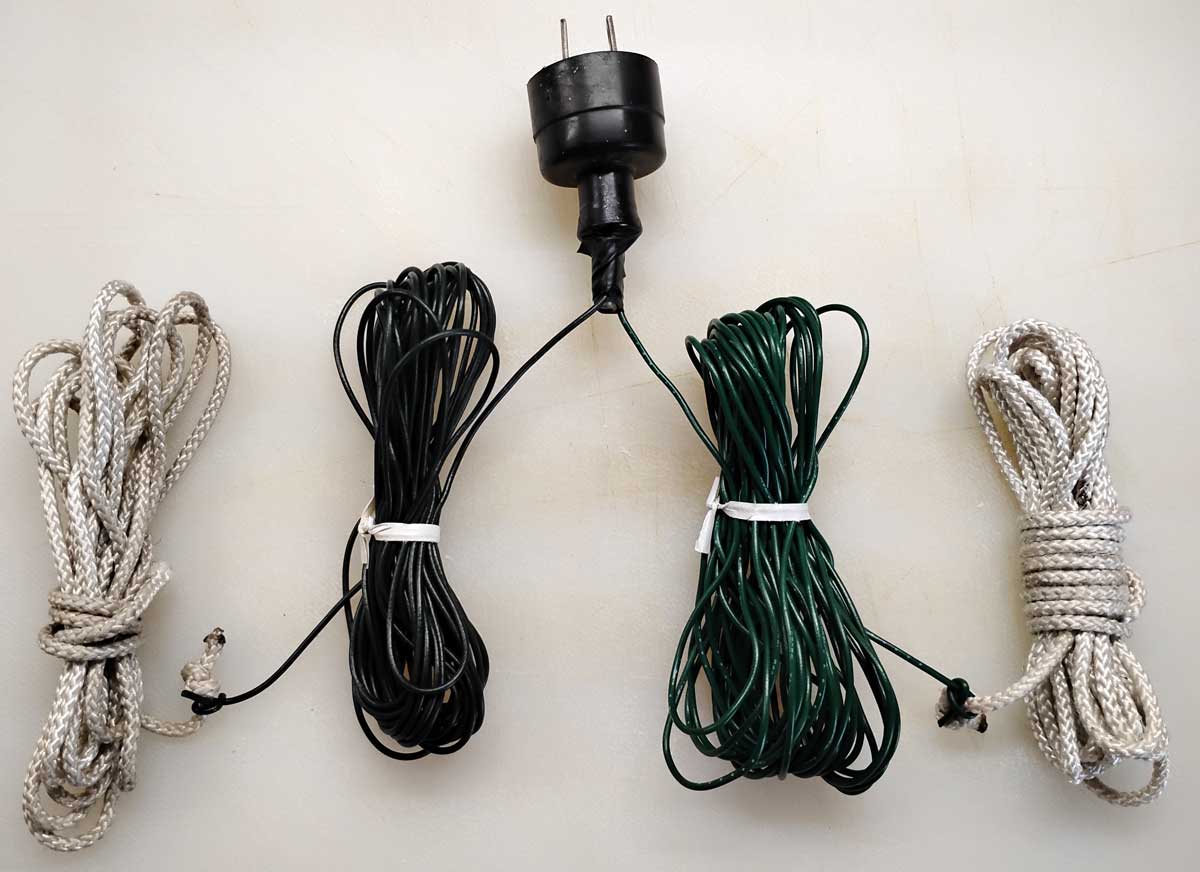
I successfully made my longest QSO in 50 years on-the-air 6JULY2025 with this antenna: VK6YNE in Busselton, Australia... 12,900 miles from CT going the long way...over the Atlantic & Indian oceans.
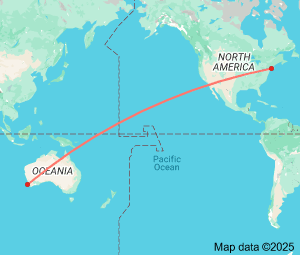

Other QSOs with it in the first 3 days:
BELGIUM
BULGARIA
CHILE
COLUMBIA
CROATIA
ENGLAND
GERMANY
GREECE
LITHUANIA
POLAND
RUSSIA
SPAIN
UKRAINE
URUGUAY
Comments:
Your idea with the 110 plug antenna! Genius!! I feel like we shoulda seen this before.. Your comments are turned off but I felt the overwhelming urge to tell you that idea is awesome!
Jesse Q
That’s bizarre and awesome at the same time!
Terry B
I like it!
Richard M
Pretty cool bud!
Marcus B
Awesome!
Jim P |